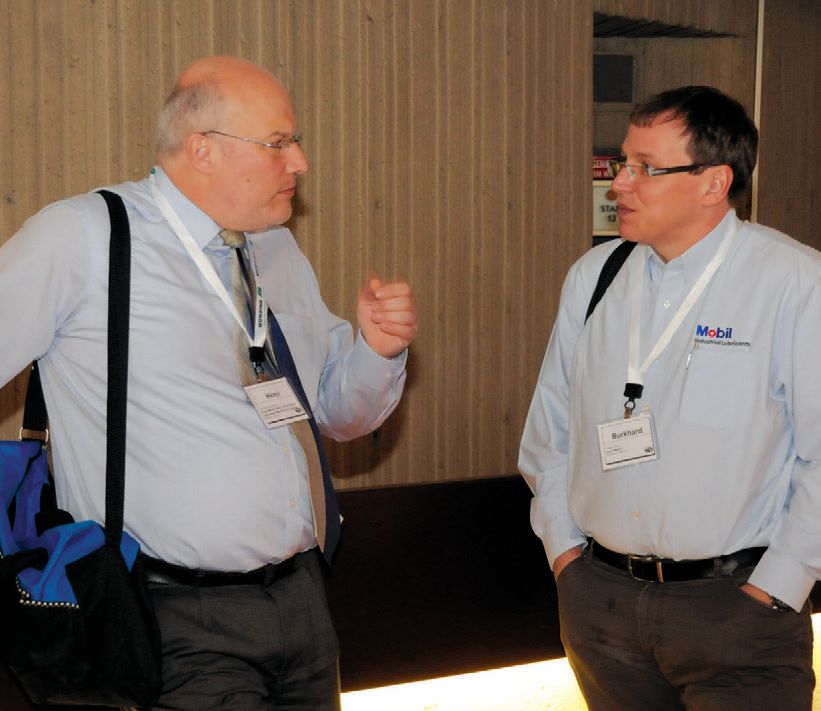Mastering the art of networking
Edward P. Salek, CAE, Executive Director | TLT Headquarters Report April 2014
Some thoughts on what to do if “working the room” doesn’t come naturally.

You never know when even a casual conversation at an STLE meeting could lead to a technical solution, a new opportunity or a business relationship.
IT HAS BEEN REPORTED that former U.S. President Bill Clinton would say, “It’s show time!” before stepping foot into any event. This was indicative of his focus on the art of networking—he knew the people who would be there, he came with the intent of forming relationships and he made his time purposeful.
With the networking opportunities that are available at the STLE Annual Meeting & Exhibition in May, and other events throughout the year, most of us would love to have the skill set of a naturally extroverted networker like President Clinton. But for those who, like me, are not adept at “working the room,” there is hope for some improvement in the form of a new white paper published by The National Conference Center (NCC), which is located in the Washington, D.C. area.
Titled
The Power of Networking, the report is based on interviews with eight business leaders and meeting professionals who offer tips on how to be a better networker. This is crucial, they contend, because there is simply no substitute for face-to-face connections, even in this age of Facebook and LinkedIn.
The guidance starts by defining what we mean by networking. According to these experts, networking can and should be more than chit chat over a glass of Chardonnay or a bottle of beer. Instead, we should think of it as the process of cultivating people who can be helpful, both professionally and personally.
Networking superstars dissect this concept and approach it strategically. The NCC white paper advises that this requires “work, practice, concentration and good habits. It’s asking who is going to be there, what do I want to accomplish and what do I want to walk away with?”
Once you are at an event, the article recommends coming up with an introductory line that sparks conversation and invites more than superficial dialogue. One of the contributors suggests, “Instead of asking where someone works, ask ‘What has you the most engaged today?’ It shifts the focus to them.” Thought-provoking questions are another good conversation starter. At your next networking event, try asking: “What person in history do you most admire and why?”
The NCC white paper offers many other practical ideas to power up your networking skills. Three of my favorites are:
•
Have a goal set and know who you want to meet prior to attending. Come prepared with business cards, but only give them to people who you can either help or that you feel have a strong interest in your product or service.
•
Do less talking and more listening! We love to hear ourselves talk. Show interest. You draw interest when you show interest.
•
Don’t focus on the people you know, use the people you know to connect with other people.
While primarily a technical-education conference, STLE’s upcoming annual meeting is loaded with networking opportunities. The Welcoming Party, Presidents Luncheon and trade show are the most obvious examples. But remember that even casual conversations during refreshments breaks and in the hallways between technical sessions or education courses are opportunities for you to apply your networking skills. Some 1,400 people from around the world are attending the event, and you never know when a casual conversation will lead to a technical solution, a new opportunity or a business relationship.
The
Power of Networking is available for complimentary download from The National Conference Center’s Website (click
here). For more in-depth reading, check out
Eat, Drink and Succeed: Climb Your Way to the Top Using the Networking Power of Social Events by Laura Schwartz. It’s available on Amazon and through other booksellers.
 You can reach Certified Association Executive Ed Salek at esalek@stle.org
You can reach Certified Association Executive Ed Salek at esalek@stle.org.